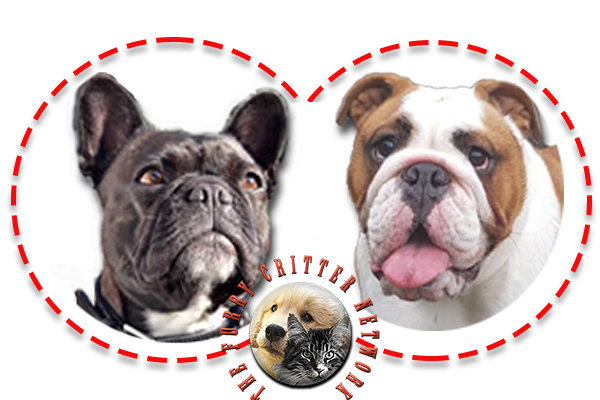Behavior
The French Bulldog, like many other companion dog breeds, requires close contact with humans. If left alone for more than a few hours, it may experience separation anxiety.
French Bulldogs are often kept as companions. The breed is patient and affectionate with their owners, and can live with other breeds. French Bulldogs are agreeable dogs, and are human-oriented, and this makes them easier to train, though they do have tendencies to be stubborn.
They are ranked 58th in Stanley Coren's The Intelligence of Dogs. There are certain exceptions to this average level of canine intelligence; a French Bulldog named Princess Jacqueline which died in 1934 was claimed to be able to speak 20 words, in appropriate situations.
The ideal city dog, he adapts well to apartment life. During walks, he must be taught not to pull on the leash, or he may develop a poor gait. He hates being separated from his owner. He needs daily brushing during the shedding season, as well as a bath every two months. His eyes and the folds on his face need regular attention.
Health
As a consequence of selective breeding, French Bulldogs are disproportionately affected by health related problems:
Brachycephalic airway obstructive syndrome
The skull malformation brachycephaly was increased by breeding selection which led to the occurrence of the brachycephalic airway obstructive syndrome. Therefore many French Bulldogs often pant sticking out their tongue even at slight efforts like walking. The brachycephalic syndrome causes them to have multiple side effects, as in difficulty breathing (which includes snoring, loud breathing). It happens because they have narrow nostril openings, a long soft palate, and fairly narrow tracheas. This issue can lead to death in French Bulldogs if they are not undergoing proper treatment.
In order to treat these dogs and create a smoother airway to the lungs, a procedure must be done that takes out a portion of their soft palate. The results of the procedure show a minimum of 60% better airway passage to the lungs.
In 2013, a UK Medical Study reviewed the health of 2228 French Bulldogs under veterinary care in the UK. The study found that 1612 (72.4%) of these French Bulldog had at least one recorded health issue: "The most common disorders recorded were ear infections (14.0%), diarrhea (7.5%) and conjunctivitis (3.2%). Skin problems were the most commonly reported group of disorders (17.9%). This study of over two thousand French Bulldogs provides a framework to identify the most important health priorities in French Bulldogs in the UK and can assist with reforms to improve health and welfare within the breed."
Temperature regulation-related issues
The French Bulldog has only a single short coat, which combined with their compromised breathing system, makes it impossible for them to regulate their temperature efficiently. This means the dog may easily become cold, and are prone to heat stroke in hot and humid weather. French Bulldogs are also prone to allergies, which can cause eczema on the body.
As they are a brachycephalic breed, French Bulldogs are banned by several commercial airlines due to the numbers that have died while in the air. This is because dogs with snub noses find it difficult to breathe when they are hot and stressed. The temperature in a cargo space in an aircraft can rise as high as 30 °C (86 °F) when waiting on the runway.
Birth and reproduction
French Bulldogs sometimes require artificial insemination and, frequently, Caesarean section to give birth, with over 80% of litters delivered this way.
Back and spine
French Bulldogs are prone to having congenital hemivertebrae (also called "butterfly vertebrae"), which will show on an X-ray.
In October 2010, the UK French Bulldog Health Scheme was launched. The scheme consists of three levels: the first level, Bronze, designates a basic veterinary check which covers all the Kennel Club Breed Watch points of concern for the breed. The next level, Silver, requires a DNA test for hereditary cataracts, a simple cardiology test, and patella grading. The final level, Gold, requires a hip score and a spine evaluation. The European and UK French Bulldog fanciers and Kennel Clubs are moving away from the screw, cork-screw or 'tight' tail (which is an inbreed spinal defect), and returning to the short drop tail which the breed originally had. The UK breed standard now states that the tail should be "undocked, short, set low, thick at root, tapering quickly towards tip, preferably straight, and long enough to cover anus. Never curling over back nor carried gaily."
The French Bulldog may develop skin fold dermatitis.






